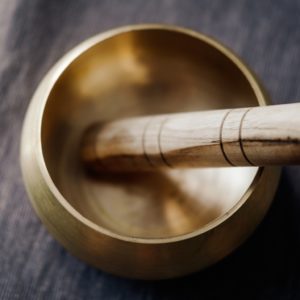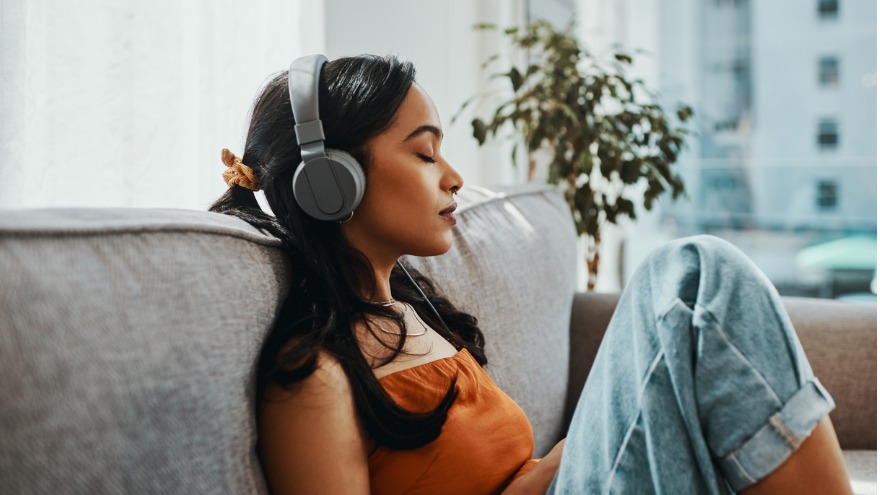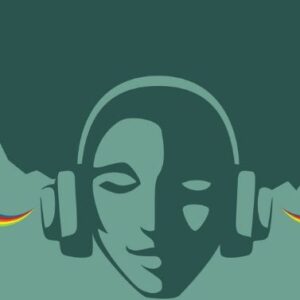You might want to rethink throwing shade on so-called woo woo wellness. Led by millennials, woo woo ways, aka alternative healing, are more popular than ever. “People typically gravitate toward alternative practices when the world around them becomes confusing, overwhelming or frightening,” says Elisa Robyn, a Colorado-based psychologist and trained astrologer. She recently told Shondaland, website of the company behind popular TV series like Grey’s Anatomy, “We all want and need comfort when we’re frightened.”
The thing about most of these modalities is that even though they haven’t been thoroughly vetted by the scientific standards of Western medicine, they aren’t new…and they all have their success stories.
See also: Free Meditation Apps for Event Planners on the Go
Take sound, for instance. Western research has found that our bodies, especially our brains, process sound differently from the other senses. Music helps dementia and Alzheimer’s patients recall memories and emotions, and can improve focus and their ability to communicate with those close to them. In some cases, it has even lowered dependence on psychiatric drugs.
Bathing in Sound
 You may have heard of sound baths, which employ Tibetan singing bowls, quartz bowls, gongs, ting-shas (tiny cymbals) and dorges (bells) to “bathe” listeners in a range of acoustic vibrations and frequencies. It’s an ancient practice from the mountains of Tibet. Elsewhere in the world, Australian aboriginal tribes have used their didgeridoos for sound healing for millennia.
You may have heard of sound baths, which employ Tibetan singing bowls, quartz bowls, gongs, ting-shas (tiny cymbals) and dorges (bells) to “bathe” listeners in a range of acoustic vibrations and frequencies. It’s an ancient practice from the mountains of Tibet. Elsewhere in the world, Australian aboriginal tribes have used their didgeridoos for sound healing for millennia.
According to Psychology Today, one study found that an hour’s sound meditation reduced tension, anger, fatigue, anxiety and depression—and enhanced a sense of spiritual well-being. “People who had never done sound meditation experienced significantly less tension and anxiety afterward,” notes Dr. Marlynn Wei, a board-certified Harvard- and Yale-trained psychiatrist and author of the article.
Music as therapy is practically mainstream. A review of 400 published scientific articles on music as medicine cited by the National Center for Biotechnology Information concluded that it can improve mood and reduce stress—and that rhythm (as opposed to melody) can provide physical pain relief.
The Sound of Relief

Dr. Wei goes on to say that one theory of how sound works is through its “vibrational tactile effects” on the entire body, especially in pain perception. A study of sufferers of fibromyalgia found that ten treatments of low-frequency sound improved sleep and decreased pain, allowing nearly three-fourths of participants to reduce their pain meds.
Indeed, the laundry list of ailments which has responded to sound-based vibration treatment is almost too good to be true: muscle, arthritis, menstrual and postoperative pain are examples. “Sound-based treatment has even been found to improve mobility, reduce stiffness, increase blood circulation and lower blood pressure,” Wei says.
More: What Does Your Sign and Kiss Have to Do With Event Planning?
Another theory she mentions is based on the concept of “binaural beats” or “brain entrainment,” which suggests that listening to certain sound frequencies can synchronize and actually change one’s brain waves. This synchronization can lead to the deep relaxation associated with meditative, trance-like theta brain waves that stimulate daydreaming and creative impulses.
“Researchers are still trying to determine the mechanism of the healing benefits of sound, but sound in the form of vibrational therapy or meditation offers potential therapeutic benefits with low to minimal side effects,” Wei concludes.
In other words, instead of woo woo, maybe it should be “oh wow.”
The Beat Goes On
 A need to seek relief from not only physical ills, but also the incessant bombardment of dire news and negative social media has led spas and resorts around the world to offer sound healing and other woo woo wellness treatments in ever-increasing doses. At Pronghorn Resort in Bend, Oregon, for example, a Wellness Teepee tucked away near the golf course is a secluded setting where individuals and small groups can escape to sound bathe, meditate and explore traditional Chinese medicine techniques.
A need to seek relief from not only physical ills, but also the incessant bombardment of dire news and negative social media has led spas and resorts around the world to offer sound healing and other woo woo wellness treatments in ever-increasing doses. At Pronghorn Resort in Bend, Oregon, for example, a Wellness Teepee tucked away near the golf course is a secluded setting where individuals and small groups can escape to sound bathe, meditate and explore traditional Chinese medicine techniques.
Carneros Resort and Spa in Napa, California, has recently added a sound lounger, designed like a musical instrument, to cradle guests in a soothing musical massage for deep relaxation for the mind and body. The zero-gravity position of the lounger is ideal for increased circulation as guests don Bose headsets.
Miraval Arizona in Tucson features a “chorus of crystals” that combines Himalayan sound bowls and a quartz crystal harp for “renewed and balanced energy.”




